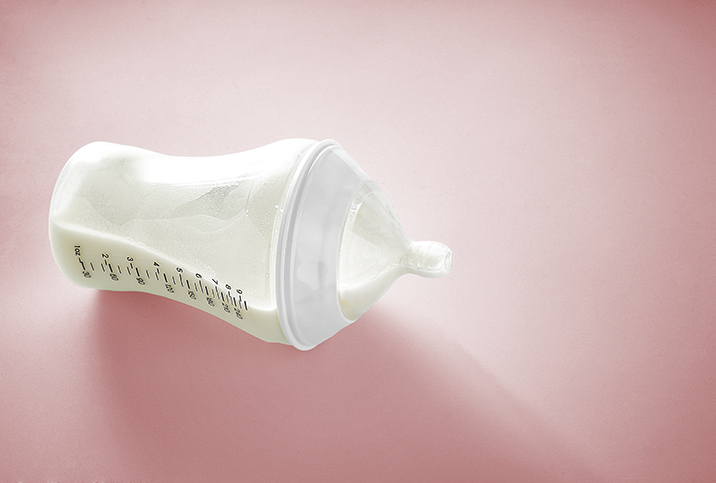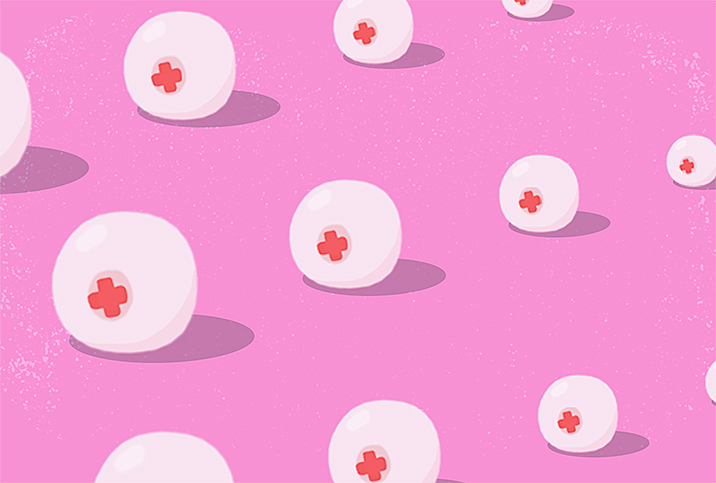Can Lactation Be Induced?

A growing number of caregivers who have not been pregnant are turning to induced lactation techniques, hoping to create a unique bond and provide breast milk for their newborn.
"Induced lactation means you create a milk supply without being pregnant," explained Sharon Silberstein, M.D., an OB-GYN, tongue-tie practitioner and certified lactation consultant in London.
This result is possible by stimulating the mammary glands of a woman who has not been pregnant.
The experience is being requested by adoptive parents, those who used surrogates, non-birthing partners, relatives (mothers, sisters) of women who have not been able to breastfeed and transwomen. Read on to learn what to expect when inducing lactation, different techniques and safety considerations.
What to expect when inducing lactation: One couple's journey
Same-sex couple Yoi Arias and Nacarid Portal welcomed their twins in 2021 and were both able to experience breastfeeding their infants. While Arias was pregnant, they looked for options for Portal to breastfeed as well. The first attempts were unsuccessful until they met an expert in induced lactation.
"Olga de Acevedo had successfully performed induced lactation on adoptive mothers and grandmothers who lost their daughters in childbirth," said Portal, a journalist and writer in Venezuela.
"Many nurses thought it wasn't true that I could breastfeed. They belittled my production," Portal recalled. However, while Arias was in recovery after delivery, Portal was able to nurse the babies. "I brought the babies to my breast and Liam peed and evacuated...it was the sign that I was indeed feeding them," she added.
Additional signs induced lactation is working are milk droplets and other breast changes.
How can lactation be induced?
There are several ways to induce lactation, including herbs, supplements, medications, mechanical stimulation, and/or the infant to facilitate breast milk production, according to a 2021 literature review published in the medical journal Malaysian Family Physician.
"It can be done with or without a hormone protocol, with frequent and regular breast stimulation, herbal supplements," Silberstein confirmed. "In my experience, it usually works better with the hormone protocol."
Stimulation techniques are diverse and vary according to the individual's unique background. Danielle Gauss, a board-certified lactation consultant in Orange County, California, explained some of the techniques used to stimulate milk production:
Hormone stimulant with pumping
In addition, lactation can be induced through a technique involving hormone stimulant and pumping. With this method, it's recommended the parent desiring to breastfeed start hormone therapy at least two months before breast stimulation.
"The hormonal stimulation, which has made the body think it is pregnant, is usually stopped about six to eight weeks before the infant's birth to trick the body into thinking it gave birth. At this time, breast pumping is initiated," Gauss explained.
Prolactin stimulation with medication and pumping
"This is a nonhormonal method using only prolactin stimulants…and breast pump stimulation," Gauss said.
Likewise, for best results, it is recommended to start a couple of months before the baby is born.
Breast pump only
Mothers who choose this option prefer not to use any type of medication for stimulation. According to Gauss, the effectiveness depends on different factors, such as the hormonal response to stimulation, the frequency of stimulation and the baby's willingness to accept the breast.
Neurostimulation technique
Portal turned to a multisensory neurostimulation technique, which doesn't require a pharmacological step. It is triggered by the suction reflex or the stimulation of an extractor, combined with the patient's immersion into a state of emotional awareness.
She had to awaken all five senses and connect with her wife to feel she was experiencing the pregnancy along with Arias. At the same time, she listened to the sounds of water, a baby crying and videos of breastfeeding babies.
"Before the babies were born, the magic happened. I started producing milk," Portal recalled.
Is inducing lactation safe?
"Inducing lactation is definitely safe," confirmed Erin Harris, M.S., M.A., a certified lactation educator in Costa Mesa, California.
However, not everyone can induce lactation.
"Breast tissue and milk glands must be intact. This means that any type of top surgery, whether for breast reduction, cancer or gender reidentification, could prohibit one from inducing lactation," Harris said.
When you work with an induced lactation specialist, they make sure your body is capable, both physically and hormonally. This individual "should also make sure [you] have no underlying hormonal health conditions, such as diabetes or thyroid issues, as these could impact lactation hormones as well," Harris added.
Breastfeeding is a generally healthy option for all mammals, Gauss explained.
"It is a well-known scientific fact that breastfeeding decreases a woman's chances of developing ovarian and breast cancer down the road," she said.
Does inducing lactation meet a baby's nutritional needs?
With induced lactation, the individual produces mature milk but does not produce colostrum, the first milk during pregnancy. Colostrum is only possible when a placenta produces a hormone called human placental lactose (HPL), Silberstein explained.
Like milk produced during pregnancy, breast milk produced via induced lactation contains hundreds of important components for infant nutrition.
"Despite the fact that there is no colostrum, the nutritional value of the produced milk is fantastic," Silberstein confirmed.
However, producing enough milk through induced lactation is not always possible. Managing expectations and having a plan from the beginning is essential.
"Building a milk supply takes time, and our main goal is to feed the baby," Gauss said.
With same-sex couples where both partners are female, "the inducing parent's breast milk will usually supplement the milk the pregnant mum will produce," Silberstein said.
"Even though Yoi has always been the primary breast milk provider, I was supporting her with my breast milk," Portal said.
Donor milk from a milk bank and formula are other options, Silberstein said.
It's important to know how much milk the baby is taking in, how much formula you're using, and how many wet and dirty diapers your baby is producing.
"It may be helpful to keep a log of the number and length of each breastfeeding and pumping session," Gauss recommended.
The mother-baby bond
In addition to the physical aspects of induced lactation, there are emotional components as well.
"Lactation is hormonal, so absolutely it will impact emotions," Harris confirmed.
It is also an emotional journey because of the hope and pressure to produce milk.
"For some I talk with, who may have had trouble conceiving and are adopting, the ability to still breastfeed can be therapeutic," Harris said.
Every person's body is different, so no one should focus on the amount of milk produced.
"The most important thing to focus on is the physical contact and emotional bonds you are creating," Gauss advised. "Every drop of breast milk your baby receives is a gift."
"It is an incredible feeling to be able to provide nourishment and comfort to your child," Silberstein added, explaining that for her patients, it is significant to create this connection even if it is more time-consuming and requires a greater commitment.
For Portal, she didn't want to miss out on the experience of breastfeeding her babies.
"It represents a special, unique and intense experience," Portal said. "We just want to always give the best to our children from the commitment of love."

















